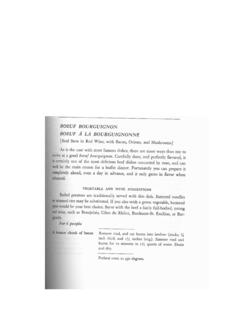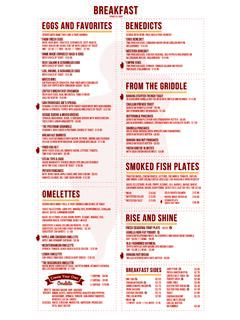Transcription of ONION
1 ONIONPost-harvest Operations - Post-harvest CompendiumONIONS: Post-Harvest Operation Organisation:Massey University, Private Bag 11-222, Palmerston North, New Zealand Author: Linus U. Opara Edited by AGST/FAO: Danilo Mej a, PhD, FAO (Technical) Last reviewed: 28/08/2003 Contents 2 1. Introduction .. 2 Economic and Social Impacts of onions .. 2 World Production and Trade .. 2 Primary product .. 3 Requirements for export and quality assurance .. 3 Consumer Preferences .. 6 2. Post-Production Operations .. 7 Pre-harvest Operations.
2 7 Harvesting & Transport .. 7 Curing & Drying .. 7 Cleaning .. 8 Packaging .. 8 Bulk 10 Processing .. 14 3. Overall Losses .. 15 4. Pest Control .. 15 5. Economic and Social 15 6. References .. 15 7. Annex - List of tables .. 16 onions : Post-harvest Operations Page 2 Preface The post-production sector accounts for about 60% of the economic activities in most developing countries. The growing, handling, storage and marketing of onions is an important part of these economic activities. In many growing regions, it is a major source of income for rural families who sell their produce in local, regional and international markets.
3 ONION are also grown in large quantity in developed countries and these products dominate the international market partly due to their higher quality and longer storage life which results from the application of improved post-harvest systems. The objective of this chapter is to examine the post-harvest handling and storage technology for onions , which assist in quality maintenance. Fig. 1. ONION bulbs 1. Introduction Economic and Social Impacts of onions onions (Allium cepa L.) are important vegetable crops in most parts of the world, particularly the varieties that are grown for bulbs.
4 In terms of global weight of vegetables produced, at nearly 28 million tonnes per annum, only tomatoes and cabbages exceed bulb onions in importance. World Production and Trade onions are important crops in the tropics, which account for nearly 30% of total global production. Although some tropical countries are net importers, export potential of onions is developing in several tropical regions partly because if dried and packed properly, the bulbs can be transported for considerable distances without deteriorating. World-wide production of onions has increased during the past five years (Table 1), and global ONION trade is estimated at about 3 million Mt annually, worth about US$700 million during this period.
5 onions : Post-harvest Operations Page 3 Table 1: Global production and trade in dry onions 2000 1999 1998 1997 1996 1995 Production (Mt) 46,962,196 46,032,893 40,750,495 39,587,473 38,696,103 37,514,029 Exports Qty (Mt) - 3,180,559 3,261,912 2,891,494 3,164,300 3,047,723 Exports Value (1000US$) - 738,489 918,543 727,672 716,953 955,326 Source: FAOSTAT, 2000 Primary product onions (Allium cepa L.) are grown mainly as food materials. They are highly valued for their flavour and for their nutritional value in supplying minor constituents such as minerals and trace elements (Table 2).
6 The bulbs are boiled and used in soups and stews, fried or eaten raw. They are also preserved in the form of pickles. ONION leaves, especially the Spring ONION , are also used in salads and soup. There is a dearth of information on secondary and derived ONION products. Table 2: Contents of major nutrients and vitamins in ONION bulbs (Allium cepa var. cepa) and leaves (Allium fistulosum) per 100g edible portion. Constituent Quantity Major nutrients Bulbs Leaves Water 87 90 91 Calories 48 36 30 Protein (g) Fat (g) trace Carbohydrate (g) 11 6 6 Fibre (g) Calcium (mg) 30 40 55 Phosphorous (mg) - - 41 Iron (mg) Vitamins -carotene equiv.
7 ( g) trace 328 630 Thiamine (mg) Riboflavin (mg) Niacin (mg) Ascorbic acid (mg) 10 50 19 Source: (Platt, 1962; FAO, 1972 Requirements for export and quality assurance The requirements for international quality standards for food products is presented in Table 3, and this must be interpreted and applied for each type of produce. For onions , a comprehensive interpretation has been documented (Brice et al., 1997). This interpretation applies to onions grown from cultivars of Allium cepa L. to be supplied fresh to the consumer onions : Post-harvest Operations Page 4 with the exception of (a) onions with their leaves and stems still green (fresh onions ), (b) onions intended for planting (basic material), and (c) onions intended for processing.)
8 Only the minimum requirements (these apply to both classes) are presented here (Table 4). The onions have to be packed in new and clean packing material, that they are saved appropriately and not subjected to external and internal changes. Both sorting and grading must be supervised by well-trained personnel in order to achieve and maintain good quality. The packages have to be designated concerning packer, kind and origin of product and trading marks. onions : Post-harvest Operations Page 5 Table 3: Summary of the Requirements for the International OECD Quality Standard Requirements Class I Class II Market value Good Quality Marketable Quality Minimum requirements Intact (flesh not exposed) Sound; produce affected by rotting or deterioration so as to make it unfit for consumption is excluded in all cases Clean.
9 Practically free from any foreign matter Sufficiently dry for the intended use (in the case of pickling onions , at least the first two dry skins and the stem should be completely dry) Free from abnormal external moisture Free from foreign smell and/or taste The stem must be twisted or clean-cut and must not be more than 4 cm long (except for twisted onions ) Quality requirements Consistency Firm and compact Reasonably firm Shape Typical of the variety Not typical of the variety Colour Typical of the variety Not typical of the variety Defects Without evidence of growth Early evidence of growth (not more than 10% for any given batch)
10 Without hollow or tough stems Free from swelling caused by abnormal development Practically free from root tuffs Allowed Small healed cracks Traces of rubbing Slight marking caused by parasite or disease Slight bruising, healed, unlikely to impair keeping quantities Light staining not affecting the last outer skin protecting the flesh Staining not affecting the last dry outer skin protecting the flesh Sizing Compulsory Minimum diameter: 10 mm Maximum deviation in diameter in each pack: 5 mm when graded between 10 mm and 20 mm 10 mm when graded between 15 mm and 25 mm 15 mm when graded between 20 mm and 40 mm 20 mm when graded between 40 mm and 70 mm 30 mm when graded between 70 mm and plus Tolerance Quality 10% 10% Size 10% 10% Packaging Presentation In layers In bulk In 'strings' (of not less than 16 bulbs with completely dry stems) Uniformity Same origin, variety Packaging Free from foreign bodies Source: (Brice et al.)















